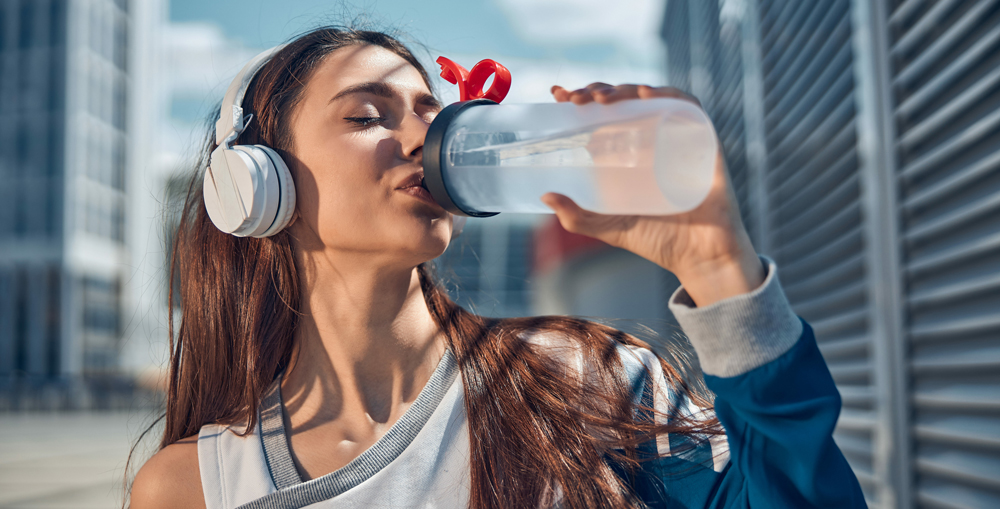Understanding why you need to drink as much water as possible after your workout is crucial. One significant factor is sweat. During the activity, your body responds by producing sweat, which subsequently evaporates to help you cool off. You will need to replenish more fluids and electrolytes, which are also excreted in perspiration, the longer you exercise. If you do not, it can lead to dehydration which is a dangerous condition to stay in for longer periods of time. That’s why today you will learn about hydration and how to rehydrate yourself after working out.
Why Is Hydration Important?
You might just consider the water component of hydration when talking about it because you are losing fluid, after all. Despite this being case, you also need to restore other minerals that are lost while sweating.
Electrolytes, which comprise of sodium, magnesium, calcium chloride, and bicarbonate, are a group of minerals found in your sweat. These minerals, and electrolytes, are essential for your body’s well-being. This is because they carry nutrients that go into your while also carrying the waste out of your cells. Furthermore, electrolytes regulate the amount of water you have in your body.
Salt, or sodium, is the electrolyte that is lost in the highest quantities through sweating. As salt contributes the most to your body’s fluid balance and is lost the most, it is very crucial to replace it. Therefore you should consume a combination of water and electrolytes in the right amounts to optimize your body’s hydration.
Signs That You Need To Rehydrate
There are two easy signs that you will notice telling you it is time to rehydrate. They are your thirst and the color of your urine. When feeling thirsty, you have already lost around 2% of your body weight through water. That is why thirst is a basic signal our body gives out that it is in need of hydration.
When it comes to the color of your urine, you should stay away from having your urine turn into a darker yellow, orange or brownish color. This means that you are dehydrated and need to supply your body with more water and electrolytes. Normal urine color is light yellow or lemonade color. Neither having your urine see-through, or watercolor, is optimal. Mostly because by this point you are overly hydrated, which can have its side effects as well. Overhydration is called hyponatremia, and it occurs when salt/ sodium in your blood gets diluted too much.
Other symptoms of you being dehydrated are lightheadedness, nausea, muscle cramps, or GI distress.
How To Rehydrate Yourself After Working Out?
Hydration before and during workout
Playing the preventative game in advance is one of the finest methods to rehydrate following a sweaty workout: Be well-hydrated before your workout. Drinking 17 ounces of liquid two hours before exercise is advised by the American College of Sports Medicine’s guidelines. Your sweat rate and overall level of thirst will both affect how much fluid you need to consume during your workout. Focus mostly on your thirst, as we do not want to overconsume water.
Rehydration after working out
Find out how much fluid you have lost. This is easily done by weighing yourself before and after working out. We usually lose 0,5 to 2 liters of fluid per session but you want to aim to replenish 100% to 150% of what you sweated out. So sweating out 1 liter means that you should drink at least 1 liter of fluid afterwards.
You should as well take small sips of water. Do not chug large quantities of water directly as it might just run through you, meaning you will pee most of it out. This happens because our cells can absorb a certain amount of fluid at once. The rest doesn’t get stored for future use, especially when we need it the most. So focus on drinking small amounts frequently rather than big amounts less often. You will even avoid your stomach feeling heavy by doing this.
Depending on your working out environment and how salty your sweat is, you should consider adding electrolytes to your drink. Usually we humans lose 1200miligrams of sodium, or salt, per liter of sweat. And you remember why having optimal sodium levels in your body is important, right? Knowing how much sodium we exert by working out gives us a better understanding of how much we should replenish post-workout. This means that you can make better choices when choosing between post-workout sports drinks.
Hydration Through Food
Smoothies
A fantastic option if you workout for less than an hour because you won’t likely need to worry as much about replenishing bigger levels of salt. They’re also excellent for supplying your body with the protein and fat it needs after exercise, especially if you don’t tend to have a huge appetite after working out. Include electrolyte-rich foods such as watermelon, bananas, and dates, to get the most out of your smoothie. To replenish potassium you may also include coconut water and leafy greens.
Food Rich In Water
Eat foods high in water content, such as cucumbers, peppers, broccoli, lettuce, and watermelon, to assist restore your fluids if you have problems remembering to take regular sips after your workout. The following fruits and vegetables are also highly hydrating: celery, strawberries, cauliflower, zucchini, and cauliflower. To enhance your consumption of water and minerals, add mentioned food to salads, and smoothies, or just munch on them throughout the day.
Salty Foods and Water- Your body might retain water if you eat snacks that have a bit more salt in them. Think about having some cheese and crackers, salted almonds, pretzels, and beef jerky, together with water. You can also eat saltier foods like tuna sandwiches or sushi with soy sauce.

